 |
 |
 |
 |
Seki-kun is really raising the bar every week. The show, too.
Kanojo ga Flag wo Oraretara – 07
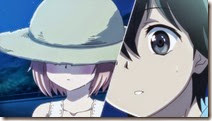 |
 |
 |
 |
 |
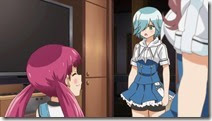 |
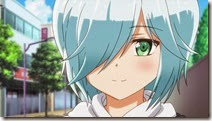 |
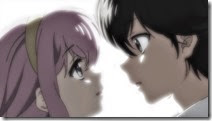 |
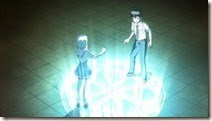 |
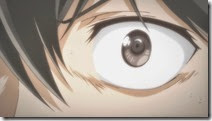 |
 |
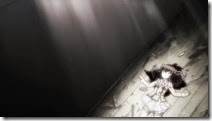 |
 |
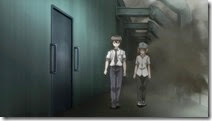 |
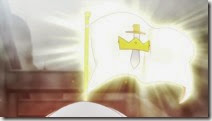 |
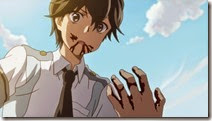 |
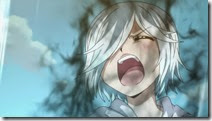 |
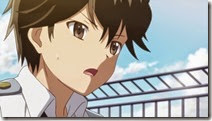 |
This is a pretty odd series to begin with, but I found that episode especially strange. There were quite a few moments when I was rather confused as to what was happening – not least the very start of the episode with Megumu, which made it seem as if we were walking in on the middle of a story. That little plot point was blown through in about a minute, and things just got weirder from there.
There aren’t many times when I don’t find Gawoware at least interesting, even when I don’t have much of an idea what’s happening. And this was certainly an interesting episode, full of alternate realities and new terminology and disturbing scenes of characters dying. It’s funny, but this series is definitely more unsettling and disturbing than Gokukoku no Brynhildr when it tries to be – and unlike that series where the two contrasting sides are always coexisting, in this case the series seems to swing pendulum-like between extremes, without stopping in-between.
That approach can be effective, and even when it’s disjointed that can actually play up the unsettling tone of the series. This ep might have taken things a little farther in that direction than ideal, at least for me. The Sacrament, the Seven Virtues, the mysterious ship that controls the fate of the universe, Mackenzie Hatate Miyuki appearing with the “main character flag“… It all had a bit of a sensory overload quality to it, a lot of detail for detail’s sake. And as for humor, for the first time there was nary a drop of it here – a few moments with the crazy Kaichou and her date with Souta, but that’s about it.
Might things have been rushed along a little too much in order to adapt Gawoware in 13 episodes? I don’t know the source material so I can’t say, but it’s starting to feel that way. For now I would only be guessing as to what’s happening with the story, but it seems we’ve had something of a reset button pushed, with Sakura appearing to wipe Mei’s memory, Miyuki assuming some sort of major role and pretty much every named character in the cast now living at Quest. I’m certainly interested in seeing what happens and I like the thrill-ride aspect of Gawoware, but I wouldn’t mind if it manages to be a little more coherent from here on out.
Tonari no Seki-kun – 20
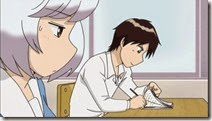 |
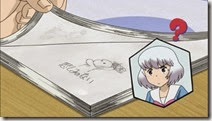 |
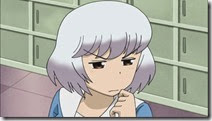 |
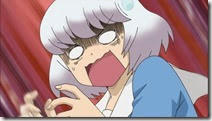 |
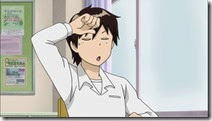 |
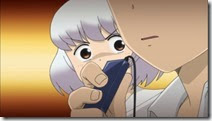 |
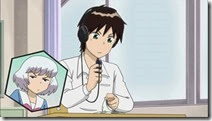 |
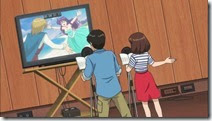 |
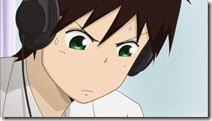 |
 |
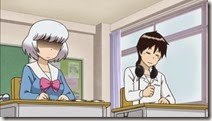 |
 |
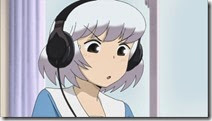 |
 |
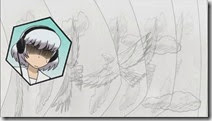 |
 |
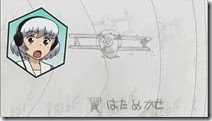 |
 |
 |
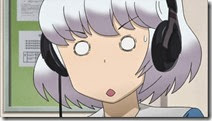 |
 |
It would be pretty hard to recall another anime cramming as much brilliance into seven minutes every week as Tonari no Seki-kun. There’s probably never been a series that needed to be blogged less, because it speaks for itself with perfect clarity – but I do feel the urge to at least sing its praises.
We see here another example of the way the series has all its elements in perfect balance, and the way the anime skillfully transitions it to a new medium, injecting new elements into the series without losing what makes the manga great. It’s a real showcase for the two main seiyuu (who would have believed that going in), who get a cameo this week, as well as for interesting musical choices, like Tsubasa wo Kudasai this week. I first heard it in the first Rebuild of Evangelion film, but it’s actually a Japanese folk song released way back in 1971.
The outlet for Seki-kun’s genius this week is a “para para manga” (flipbook) though in this case – it being Seki – it’s actually a para para anime. The flipbook is one of the all-time schoolboy time-wasters, a classic that transcends cultural borders – but leave it to Seki-kun to raise it to a whole new level. And of course, Yokoi being who she is burns with curiosity to see what the finished product looks like, so much so that she sneaks back into the classroom, sits in Seki’s seki and slips on his headphones (indirect ear and butt kiss!) to watch for herself.
The payoff is, as usual, worth the wait – it’s a sort of commercial for one of Seki’s favorite haunts, the “Toyama Model Shop”, complete with a voice-over by the owner (Jukyu Ikkyuu – in a hilarious moment we see him dubbing his line). Seki even draws an old-school countdown at the beginning of the film. And as you’d expect, the damn thing is a work of art – actually pretty damn beautiful. And I love the fact that Seki yearned to draw it and Yokoi to see it (and it’s adorable how embarrassed she is to listen to his sound effects) – there’s a real soul-caliber link between these two odd kiddos. Tonari no Seki-kun makes it look effortless, but trust me, stuff this good doesn’t create itself – it (like Seki’s little masterpiece) is a work of real genius.





whemleh
May 20, 2014 at 7:03 pmIs it just me, or did Hatate seem genuinely attracted to the Kaicho? He was just that little bit more responsive than with any of the other girls.
I'm interested in the plot well enough, but I'd love to see more of the manic humour and energy from the first 3 episodes.
admin
May 20, 2014 at 11:16 pmMe as well.
I've always thought he had some real attraction to Akane.
whemleh
May 20, 2014 at 11:35 pmAkane would have been my pick up until this week, she seemed to be the only serious romantic candidate for him. I always prefer having some kind of romantic resolution, but this is one of those series where I wouldn't terribly mind if they did a harem ending.
reallifeanime
May 20, 2014 at 11:15 pmI truly feel that Tonari no Seki-kun is one of the most unintentionally disrespected anime of recent memory.
Like you said, this is a form of genius, but because it's comedy, I think people are much more willing to overlook the quality of the premise, execution and intelligence behind it.
It's a shame, I think. It's not really anybody's fault, but it's a shame nonetheless.
admin
May 20, 2014 at 11:17 pmI think it's not just that it's a comedy (though that generally does lead to disrespect) but as much or even more the fact that it's a short.
Gary Cochran
May 21, 2014 at 12:37 amYa most short animes have sucked bad. The only ones I have liked are Seki-kun and Kuromajo-San. Puppa was a waste and should NEVER have been a short.
Dvalinn
May 21, 2014 at 1:52 amPupipo! was actually pretty good too.
But yeah, most of them are freaking terrible. Like, yeah, Pupa. What a waste indeed.
admin
May 21, 2014 at 2:29 amYeah, I liked Pupipo, though it could have been full length. I'd also list Chi's Sweet Home and Poyopoyo-san as good short anime.
Dvalinn
May 21, 2014 at 1:50 amI feel the basic story of Gaworare, past all the fancy names, is still pretty simple. Souta's power of flags is more like something out of Steins;Gate than anything else – he radically changes the fates of people around him (causing different timelines), and the guardians of fate are not amused. The only way he can break his curse of sorts is to perform a ritual involving all the girls. Meanwhile, the cypher known as Sakura is the one causing all this chaos for reasons still unknown. That's what I got out of it anyway. Also, it wasn't so much a reset button as it was a way to shut Mei up – Souta still knows everything, after all.
You're right in saying that this show can be more disturbing than Brynhildr though. Watching the girls die horribly was pretty freaking disturbing, as it's easy to forget the horrific outcomes Souta averted. Especially because the show's generally so happy otherwise (and it sure has one of the most friendly harems around).
In any case, the show's like a weird blend of Noucome, The World God Only Knows and Steins;Gate so far, and I have to admit it's working pretty well for me. This is definitely one of those shows I look forward to each week. I do worry about its ending (and the general pacing from now on) though, as I wonder how the restrictions of the 13-episode format will influence it.